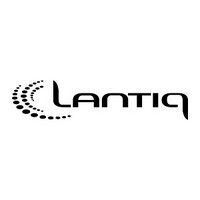PEF20550HV21XT Lantiq, PEF20550HV21XT Datasheet - Page 369

PEF20550HV21XT
Manufacturer Part Number
PEF20550HV21XT
Description
Manufacturer
Lantiq
Datasheet
1.PEF20550HV21XT.pdf
(407 pages)
Specifications of PEF20550HV21XT
Lead Free Status / Rohs Status
Supplier Unconfirmed
- Current page: 369 of 407
- Download datasheet (3Mb)
Theoretical Derivation
Using the ‘limited selection’ state, the ELIC effectively arbitrates among subscribers
according to a token ring protocol. Let ‘m – 1’ be the number of subscribers already
wishing to send data to the ELIC when an ‘m-th’ subscriber enters the arbitration. The
length of time that the subscriber has to wait will then depend on the position of the token
in the ring.
At best, the subscriber enters the arbitration just as it is passed the token. That is, the
subscriber starts to send his data just as the ELIC becomes ready to listen to it.
Regardless of the number of competing subscribers, the subscriber will then encounter
no delay. The minimum delay time is thus always 0 milliseconds.
At worst, the subscriber enters the arbitration just after the token has passed. The
subscriber will then have to wait for all ‘m – 1’ competing subscribers to send their data
before his own data is accepted.
Due to the linearity of token-bus statistics, the average subscriber will thus have to wait
for (m – 1)/2 subscribers to send their data before his own data is accepted by the ELIC.
Now, to determine the total time a subscriber will have to wait, let ‘x’ be the average
length of the HDLC frame (including address and control bytes) that subscribers wish to
send. Including the opening and the closing flag as well as the CRC word, the HDLC
message thus extends over x + 4 HDLC bytes.
Additionally, the HDLC protocol inserts a ‘0’ bit after 5 consecutive ‘1’ bits. Of course, the
precise number of inserted ‘0’ bits will depend on the content of the HDLC frame. A
conservative estimate will allow for one ‘0’ bit inserted into every second HDLC byte.
With every second HDLC byte extended by
HDLC byte. Similarily, for the two-byte CRC sum
‘0’ bits, an HDLC message thus extends over
6.2
When using D-channel arbitration, the ELIC notifies subscribers when the SACCO-A is
available to receive D-channel data. As several subscribers may start sending data
concurrently, the ELIC arbitrates among the subscribers: one subscriber is permitted to
continue sending data, while the other subscribers are blocked until the SACCO-A has
completed reception of the data of the selected subscriber.
When blocked, subscribers have to wait until the SACCO-A becomes available for
accepting their data. How long subscribers have to wait depends on the number of
subscribers who wish to send data, as well as on the average number of bytes that
subscribers wish to send in their HDLC frame.
The subsequent investigation details the delay parameters and gives average delay
times for typical S
Semiconductor Group
D-Channel Delay Due to Arbitration
0
and U
PN
applications.
369
1
/
8
byte,
17
/
1
16
/
8
x +
of a byte is added. Including inserted
1
/
16
33
of a byte must be added to every
/
8
byte.
Application Notes
PEB 20550
PEF 20550
01.96
Related parts for PEF20550HV21XT
Image
Part Number
Description
Manufacturer
Datasheet
Request
R

Part Number:
Description:
Manufacturer:
Lantiq
Datasheet:

Part Number:
Description:
Manufacturer:
Lantiq
Datasheet:

Part Number:
Description:
Manufacturer:
Lantiq
Datasheet:










